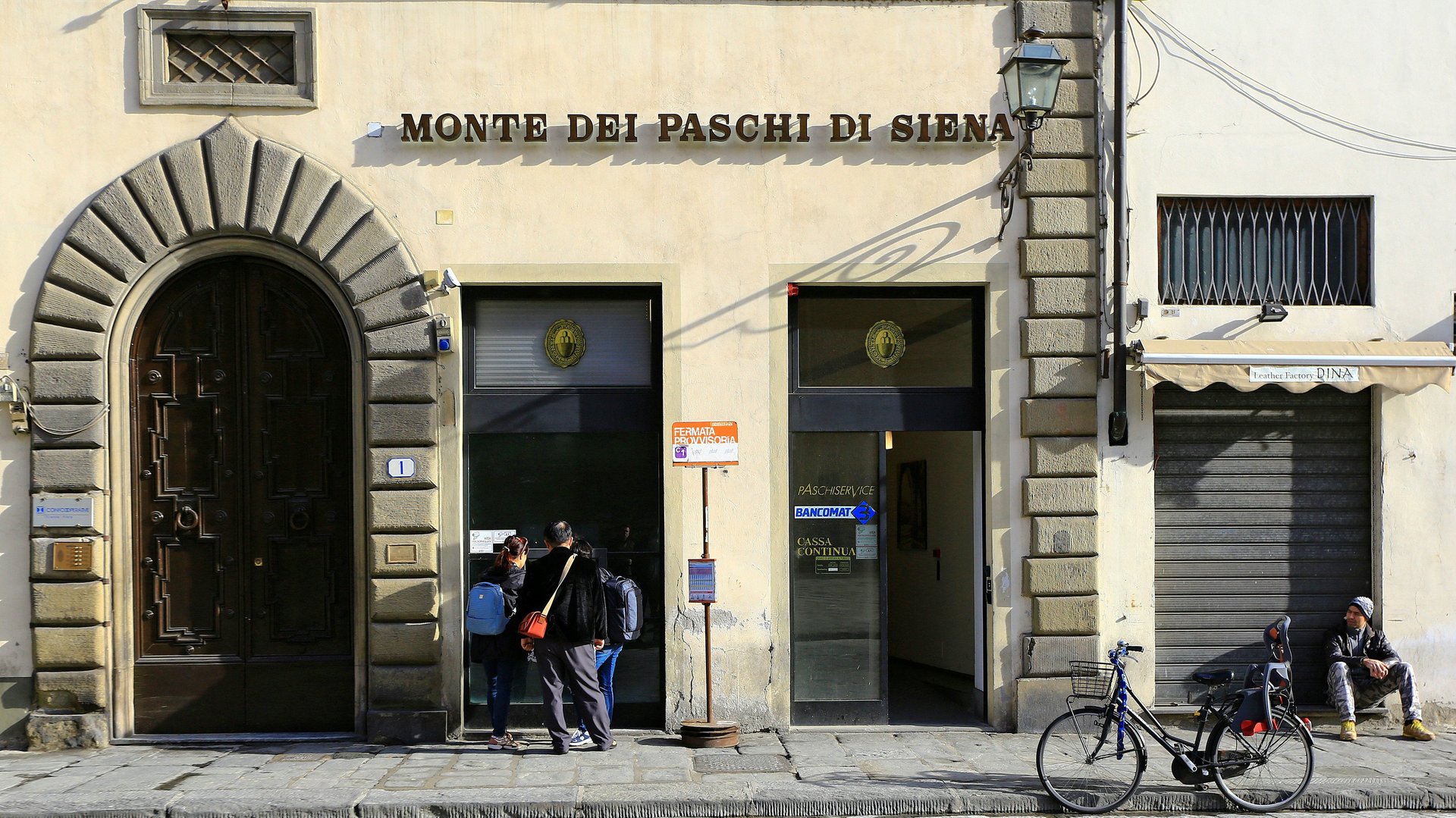Italy is bailing out the world’s oldest bank—for the third time
Using public money to bail out big banks isn’t just a bad memory from the 2007-2008 financial crisis. At least not in Italy. The bitterly indebted country has agreed to a multi-billion-euro rescue plan for Banca Monte dei Paschi di Siena, the world’s oldest surviving bank.


Using public money to bail out big banks isn’t just a bad memory from the 2007-2008 financial crisis. At least not in Italy. The bitterly indebted country has agreed to a multi-billion-euro rescue plan for Banca Monte dei Paschi di Siena, the world’s oldest surviving bank.
Just two months ago, state aid for Monte dei Paschi was ruled out by the economy minister. But now the situation is even more desperate. The Italian government has approved a €20 billion ($20.9 billion) plan that would allow the state to take on more debt so it would have money to prop up the country’s banks. Monte dei Paschi is first in line for government aid and this probably won’t be the last time the fund is tapped. Italy’s whole banking system is sitting on €350 billion of bad loans and many banks urgently need to recapitalize.
The most vulnerable of Italy’s banks is Monte dei Paschi, which yesterday missed a deadline to get €5 billion in funds from private investors—that’s more than 10 times its market value. The government will have to step in with public funds to avoid Monte dei Paschi being closed down or significantly restructured by European regulators. The bank, founded in 1472, has a market value currently standing at just €442 million, after its share price plummeted by almost 90% this year. Trading in the bank’s shares had to be suspended earlier this week after Monte dei Paschi said it would run out of liquidity in four months, not the 11 months it had estimated last week.
The bank had been trying, with the help of JPMorgan, to get investors on board for a share sale, a debt-for-equity swap, and the sale of €28 billion worth of soured loans. Qatar’s sovereign wealth fund had considered an investment but didn’t go through with it. Junior bondholders had given up their debt in exchange for equity but with the failure to find an anchor investor to buy the shares, the bank has abandoned all aspects of the capital-raising plan.
Under European Union rules, shareholders and bondholders will have to take on some losses to reduce the burden on all taxpayers from the state bailout. However, in Italy, many of these bondholders are ordinary citizens, not institutional investors. Officials said they will compensate the tens of thousands of people (paywall) who hold bonds in Monte dei Paschi.
Bailing out Monte dei Paschi is a repeat occurrence for Italy. In Jan. 2013, about €4 billion in emergency loans was given to the bank after it emerged it was covering up hundreds of millions of euros in losses. It also received €2 billion of state aid in 2009.
Italy’s entire system is on shaky ground. Late last year, four smaller savings banks were bailed out by the Bank of Italy, the nation’s central bank, with a €3.6 billion rescue fund. However, this money came from some of the country’s healthier banks, not taxpayers. A year after all the bailed-out banks were restructured, the government still has not found buyers for them. Meanwhile, UniCredit, Italy’s largest bank, said this month it will fire 14,000 people as part of an aggressive three-year restructuring plan.
This is the first big challenge for Italy’s new prime minister Paolo Gentiloni, who was ushered into power this month, after a failed constitutional referendum resulted in the resignation of the former premier Matteo Renzi, who served from 2014 to 2016. Gentiloni needs to find a way to reform Italy’s economic and political structure. Italy’s economy is barely bigger than it was in 2000 and has the largest debt burden in the region after Greece. It certainly couldn’t withstand a banking crisis.